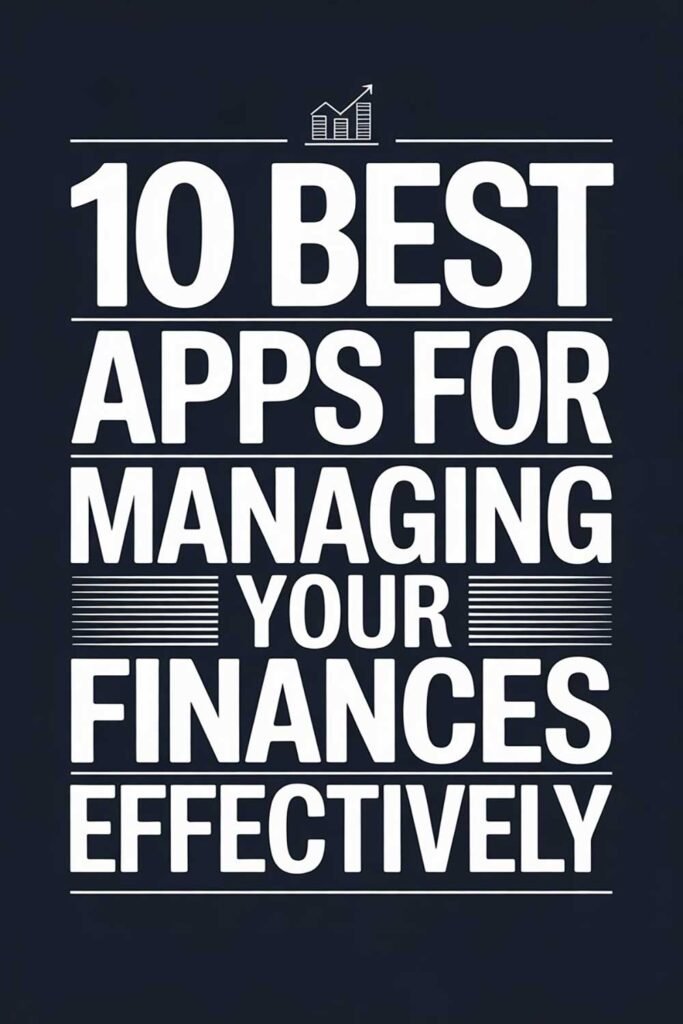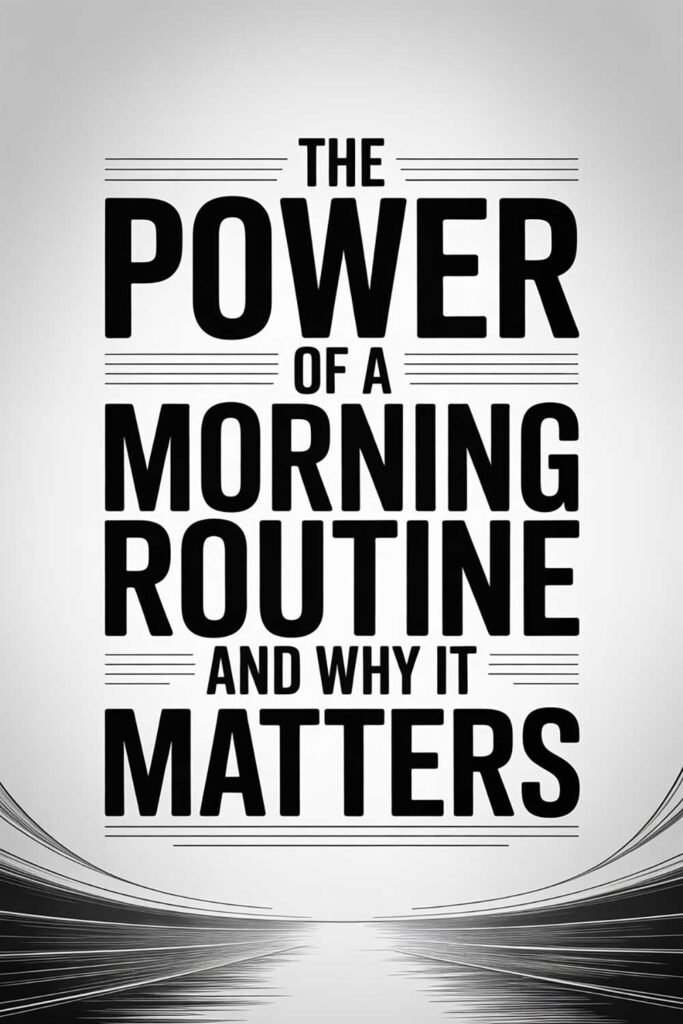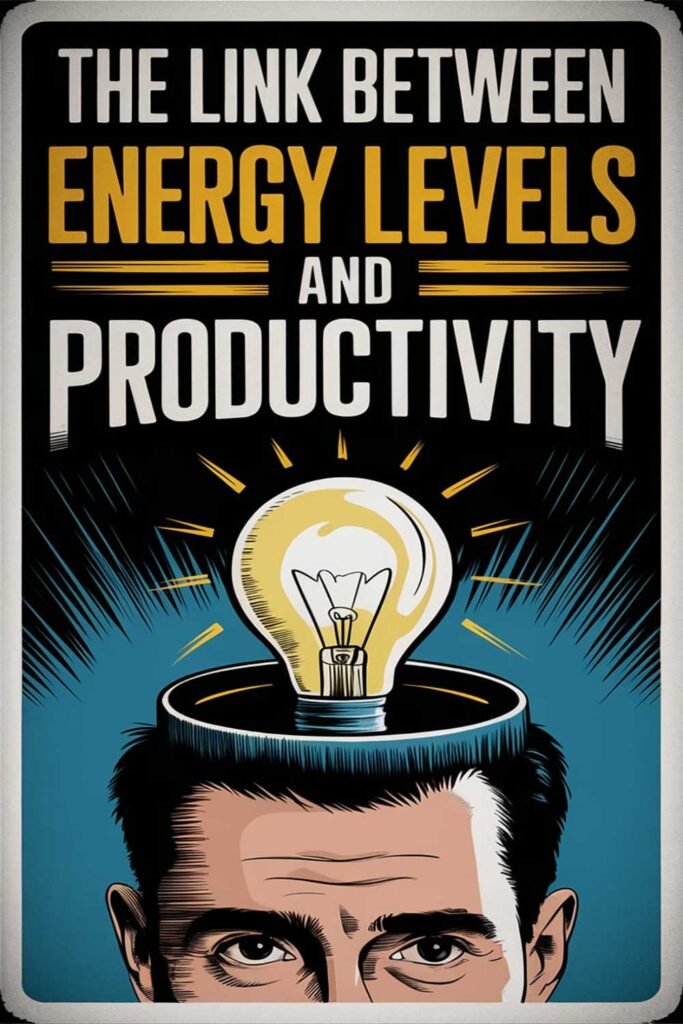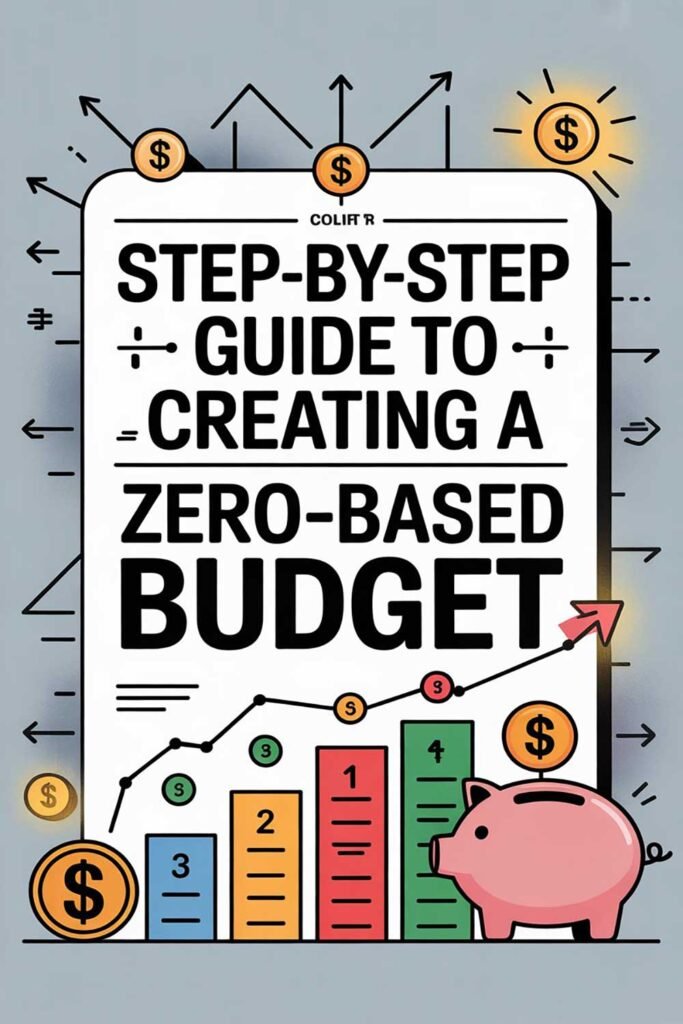
The Best Time Blocks for Maximum Focus and Energy: Unlock Your Peak Productivity Potential
Have you ever found yourself at the end of a long day, feeling utterly exhausted but wondering what you actually accomplished? You scrolled, you answered emails, you jumped from task to task, but that big project still looms, untouched. The culprit? Often, it’s a lack of structured focus and a haphazard approach to your most valuable asset: your time.
In our hyper-connected, always-on world, distractions are no longer just external noises; they’ve become an inherent part of our digital landscape. Notifications ping, emails flood inboxes, and the siren song of social media constantly beckons. It’s a battle for your attention, and without a strategic defense, your focus and energy levels can plummet, leaving you feeling overwhelmed and unproductive.
But what if there was a way to reclaim your day, to carve out dedicated periods where your focus is laser-sharp and your energy is channeled precisely where it needs to be? Enter the powerful, transformative world of time blocking.
Time blocking isn’t just another productivity hack; it’s a fundamental shift in how you perceive and manage your hours. It’s about intentionally scheduling specific blocks of time for specific tasks, treating those appointments with yourself as non-negotiable. This isn’t about rigid adherence to a minute-by-minute schedule, but rather about creating a framework that supports your natural energy cycles and helps you achieve deep, meaningful work.
Think of it this way: your day isn’t a continuous, amorphous blob of hours. It’s a series of distinct phases, each offering unique opportunities for different types of work. By understanding and leveraging these phases, you can align your most demanding tasks with your peak energy levels, leading to unprecedented levels of focus and output.
This comprehensive guide will delve deep into the art and science of optimal time blocking. We’ll explore various methodologies, discuss how to tailor them to your unique rhythms, provide real-life examples, and equip you with the tools to transform your daily productivity from chaotic to controlled, from draining to dynamic. Get ready to discover how to unlock your maximum focus and energy, every single day.
Why Time Blocking is Your Secret Weapon Against Overwhelm
Before we dive into the “how,” let’s solidify the “why.” Why is time blocking so remarkably effective?
- Combats Multitasking Mania: The myth of effective multitasking has been thoroughly debunked. Switching between tasks constantly (often called “context switching”) drains your cognitive resources, reduces accuracy, and makes everything take longer. Time blocking forces you to single-task, dedicating your full attention to one thing at a time.
- Reduces Decision Fatigue: When you’re constantly deciding what to work on next, you expend valuable mental energy. With a time-blocked schedule, those decisions are already made, freeing up your brainpower for the actual work.
- Provides a Realistic View of Your Time: Many of us underestimate how long tasks truly take. Time blocking forces you to confront the reality of your hours, helping you allocate time more accurately and avoid over-committing.
- Creates Momentum and Reduces Procrastination: Knowing exactly what you need to do and when eliminates the “where do I even start?” paralysis that often leads to procrastination. Each completed block builds momentum.
- Protects Your Deep Work: In an age of constant interruptions, uninterrupted blocks of time for complex, high-value work (often called “deep work”) are a rarity. Time blocking consciously carves out and defends these precious periods.
- Improves Work-Life Balance: By scheduling everything, including personal time, exercise, and breaks, time blocking helps prevent work from spilling endlessly into your evenings and weekends. It creates clear boundaries.
If you’re still wondering about the foundational benefits, a deeper dive into What is Time Management and Why it Matters can provide even more context on the critical role of structured time.
Understanding Your Energy Cycles: The Foundation of Effective Time Blocks
The biggest mistake people make with time blocking is trying to force their energy into a rigid, arbitrary schedule. The most effective time blocks are built upon an understanding of your chronotype and ultradian rhythms.
Your Chronotype: Are You a Lark, Owl, or Something In Between?
Your chronotype refers to your natural inclination to sleep at a certain time – essentially, when you’re most alert and productive.
- Larks (Morning People): You wake up naturally early, feel most energetic in the morning, and start to wind down by late afternoon or early evening.
- Owls (Evening People): You struggle with early mornings, hit your stride in the afternoon or evening, and may find your most creative or focused hours late at night.
- Hummingbirds (In Between): You fall somewhere in the middle, adapting fairly well to a typical schedule but perhaps having slight variations in your peak times.
Knowing your chronotype is crucial. If you’re a morning lark trying to do deep analytical work at 9 PM, you’re fighting your biology. Similarly, if you’re an owl forcing yourself to write complex reports at 7 AM, you’re setting yourself up for frustration.
Ultradian Rhythms: The 90-Minute Focus Cycles
Beyond your overall chronotype, your body also operates on ultradian rhythms, which are cycles of alertness and fatigue that last approximately 90-120 minutes. During a 90-minute cycle, you typically experience a period of increasing focus, followed by a dip in energy and concentration. Ignoring these natural cycles can lead to burnout and decreased productivity.
The key takeaway? We’re not designed to maintain peak focus for hours on end. Short, strategic breaks are not a luxury; they’re a biological necessity.
Crafting Your Optimal Time Blocks: Methodologies and Practical Application
Now that you understand the “why” and the “when” (based on your energy), let’s explore the “how.” There isn’t a one-size-fits-all approach to time blocking. The best method for you will depend on your work, your lifestyle, and your personal preferences.
1. The Classic Time Block: The Foundation
This is the most straightforward method. You simply allocate specific time slots in your calendar for specific tasks.
- How it works: Open your calendar (digital or physical) and literally block out segments of time. For example:
- 9:00 AM – 11:00 AM: Deep Work – Project X (no email, no notifications)
- 11:00 AM – 12:00 PM: Email & Communication
- 12:00 PM – 1:00 PM: Lunch & Movement
- 1:00 PM – 2:30 PM: Collaboration Meeting Prep
- 2:30 PM – 3:00 PM: Administrative Tasks
- Best for: Anyone starting with time blocking, those with predictable schedules, or individuals who need clear boundaries.
- Real-life example: Sarah, a freelance graphic designer, struggled with client demands constantly interrupting her creative flow. She started blocking out 9 AM to 1 PM daily for “Design Sprints.” During this time, her phone was on do-not-disturb, and email was closed. She’d then dedicate 1 PM to 2:30 PM for client communication and administrative tasks. This simple shift drastically improved her output and reduced stress.
2. The Pomodoro Technique: Focused Bursts
While not strictly time blocking in the traditional sense, the Pomodoro Technique is an excellent companion that fits perfectly within larger time blocks. It breaks work into focused intervals, typically 25 minutes long, separated by short breaks.
- How it works:
- Choose a task.
- Set a timer for 25 minutes (one “Pomodoro”).
- Work intensely on the task until the timer rings.
- Take a 5-minute short break.
- After four Pomodoros, take a longer break (15-30 minutes).
- Best for: Tasks that require intense focus, combating procrastination, maintaining energy throughout longer blocks, or those easily distracted.
- Real-life example: Mark, a software developer, found his mind wandering during long coding sessions. He started using the Pomodoro Technique within his 2-hour “Coding Block.” He’d do three 25-minute Pomodoros, take a 5-minute stretch break between each, and then a longer break before his next scheduled block. This kept him sharp and prevented burnout.
3. Time Boxed Tasks: Fixed Durations for Variable Work
Similar to classic time blocking, but with a stronger emphasis on completing a task within a set period, regardless of whether it’s fully finished.
- How it works: Instead of blocking out 2 hours for “Project X,” you might time box “Brainstorming for Blog Post” for 45 minutes. The goal is to make as much progress as possible within that fixed duration. If it’s not done, you either schedule another time box or accept it’s “good enough” for now.
- Best for: Preventing perfectionism, managing open-ended tasks, or when you have many smaller tasks you need to get through.
- Real-life example: Jessica, a content creator, often got stuck trying to perfect a single social media post for hours. She implemented a “Social Media Content Time Box” of 30 minutes. Her goal was to draft and schedule as many posts as possible within that time, accepting that they didn’t have to be absolutely perfect. This increased her output significantly.
4. Thematic Blocking / Day Theming: Macro-Level Focus
This advanced form of time blocking involves dedicating entire days (or half-days) to specific themes or types of work.
- How it works:
- Monday: Strategic Planning & Deep Work (no meetings)
- Tuesday: Client Meetings & Communication
- Wednesday: Content Creation & Research
- Thursday: Administrative & Financial Tasks
- Friday: Learning & Development / Catch-up
- Best for: Entrepreneurs, executives, freelancers, or anyone with diverse responsibilities who wants to minimize context switching over the week.
- Real-life example: David, an entrepreneur with multiple businesses, used to feel pulled in a million directions. He implemented thematic blocking: Mondays for “Big Picture Strategy” (no email, no calls), Tuesdays for “Sales & Marketing,” and Wednesdays for “Product Development.” This allowed him to fully immerse himself in one area each day, leading to more impactful decisions and progress.
For more inspiration on how others have made this work, check out Real-Life Examples of Successful Time Blocking Strategies.
Implementing Your Optimal Time Blocks: A Step-by-Step Guide
Ready to get started? Here’s a practical roadmap to implementing time blocking for maximum focus and energy.
Step 1: Audit Your Current Time and Energy
You can’t optimize what you don’t understand. For a few days (or even a week), simply track how you spend your time. Note down tasks, interruptions, and, crucially, how you felt at different points of the day (e.g., “high energy,” “slump,” “creative”).
- Identify your peak focus times: When do you naturally feel most alert, creative, or able to tackle complex problems?
- Identify your low energy times: When do you typically experience slumps, brain fog, or a desire for lighter tasks?
- Pinpoint time sinks and distractions: Where do your hours mysteriously disappear? Social media? Unscheduled calls? Endless email checking?
Step 2: Define Your Priorities (The “Why” Behind Your Blocks)
Before you block time, you need to know what to block it for. What are your most important goals for the week, month, or quarter? Break these down into specific, actionable tasks. This is where your high-value, deep work tasks will come from.
Step 3: Design Your Ideal Week (Don’t Be Afraid to Start Fresh)
Instead of trying to fit new blocks into your existing chaotic schedule, imagine an ideal week.
- Start with your non-negotiables: Sleep, meals, exercise, family time, fixed meetings. Block these out first.
- Schedule your “deep work” blocks during your peak energy times: These are your sacred hours. Treat them like important client meetings you absolutely cannot miss.
- Batch similar tasks:
- Communication Blocks: Dedicate specific times for checking and responding to emails, messages, and calls. Avoid constantly checking throughout the day.
- Administrative Blocks: Gather all your paperwork, invoicing, scheduling, and other routine tasks into one or two blocks.
- Meeting Blocks: If possible, group meetings together to minimize disruption to other focused work.
- Incorporate buffer time: Things rarely go exactly as planned. Leave small gaps (15-30 minutes) between major blocks to account for overruns, unexpected issues, or simply to transition mentally.
- Plan for breaks: Remember ultradian rhythms. Schedule regular short breaks (5-10 minutes) and longer breaks (30-60 minutes) for lunch or a mental reset. Breaks aren’t unproductive; they’re essential for sustained focus.
- Schedule “flexible” or “contingency” blocks: These are times you can use for unexpected tasks, revisiting unfinished work, or catching up.
For more on planning your blocks effectively, review How to Use Time Blocking to Maximize Your Day.
Step 4: Choose Your Tools
Whether it’s a digital calendar (Google Calendar, Outlook Calendar, Apple Calendar), a physical planner, or a dedicated time-blocking app, choose a tool that you’ll actually use consistently. Digital calendars are great because you can easily move blocks, set reminders, and color-code different types of activities.
Step 5: Protect Your Blocks Like Gold
This is where the rubber meets the road. Once you’ve set your blocks, you must defend them.
- Communicate your schedule: Inform colleagues, family, or clients about your “focus hours” or “unavailable” times. Set clear expectations.
- Minimize distractions: Turn off notifications (email, social media, phone), close irrelevant tabs, and, if possible, find a quiet environment. Consider using focus apps that block distracting websites.
- Resist the urge to deviate: When an unscheduled task or request pops up, ask yourself: “Does this need to be done right now, or can it wait until my next communication or admin block?”
- Be realistic: Don’t try to schedule 100% of your time. Leave some white space for spontaneity or unexpected tasks.
Understanding the concept of Time Blocking in its entirety will further empower you in this crucial step.
Common Pitfalls and How to Overcome Them
Even with the best intentions, time blocking can be challenging. Here are some common mistakes and how to navigate them:
- Over-scheduling: Trying to cram too much into each block or leaving no room for buffer time.
- Solution: Be realistic about how long tasks take. Start with fewer, longer blocks and gradually refine. Always leave some white space.
- Getting derailed by emergencies/interruptions:
- Solution: For genuine emergencies, address them, but then re-evaluate your schedule and adjust. For less urgent interruptions, politely defer them to your next communication block.
- Not sticking to the plan: Laziness, procrastination, or simply forgetting your schedule.
- Solution: Use reminders. Post your schedule visually. Reward yourself for sticking to blocks. Start small and build the habit. If you consistently struggle, revisit your “why” for time blocking.
- Ignoring energy fluctuations: Trying to do high-energy tasks during low-energy periods.
- Solution: Re-evaluate your chronotype and ultradian rhythms. Adjust your schedule so your most demanding tasks align with your natural peaks.
- Perfectionism and analysis paralysis: Spending too much time planning the “perfect” schedule instead of just starting.
- Solution: Just begin. Your first few weeks will be about trial and error. It’s an iterative process. Learn from your Mistakes to Avoid When Starting Time Blocking rather than letting them paralyze you.
Real-Life Transformations: How Time Blocking Changed Lives
The theory is compelling, but the true power of time blocking lies in its real-world impact. Here are a few more detailed examples of how different individuals have leveraged time blocking to achieve maximum focus and energy.
Case Study 1: The Overwhelmed Entrepreneur – Maria’s Story
Maria ran a small e-commerce business. Her days were a blur of answering customer service emails, managing inventory, creating social media content, and trying to develop new product lines. She felt constantly reactive and never had time for the strategic work that would grow her business.
- Before Time Blocking: Maria would wake up, check emails immediately, get sidetracked by urgent customer queries, then try to squeeze in product development between interruptions. Her energy was scattered, and she often worked late into the night just to feel like she was catching up. Creative tasks, like developing new product descriptions or marketing campaigns, were always pushed aside. This often led to How to Overcome Creative Blocks and Find Inspiration for her.
- Time Blocking Strategy:
- Morning (7 AM – 9 AM): “Strategic & Creative Block.” Maria identified her highest energy hours in the early morning. She blocked this time for brainstorming new products, writing website copy, or planning marketing campaigns. Her phone was off, email closed.
- Mid-Morning (9 AM – 11 AM): “Customer Service & Communication Block.” All customer emails, social media messages, and supplier calls were handled during this time.
- Lunch & Movement (11 AM – 12 PM): Non-negotiable break.
- Afternoon (12 PM – 3 PM): “Operational Block.” This was dedicated to inventory management, order fulfillment, and administrative tasks.
- Late Afternoon (3 PM – 4 PM): “Flex/Review Block.” She used this for unexpected issues, follow-ups, or reviewing her progress for the day and planning for tomorrow.
- Results: Maria found she completed her creative work with significantly more depth and innovation in her dedicated morning block. Customer service became more efficient, and she felt less stressed knowing she had dedicated time for everything. She finished her workdays earlier, feeling accomplished rather than drained.
Case Study 2: The Student Juggling Academics and a Part-Time Job – Ben’s Journey
Ben was a university student working part-time to pay for his tuition. He often felt overwhelmed by deadlines, struggling to balance his studies, work shifts, and a semblance of social life.
- Before Time Blocking: Ben would study in fragmented bursts, often late at night after his work shifts, relying on caffeine. He’d procrastinate on assignments until the last minute because he couldn’t find dedicated, focused time. His energy was constantly low.
- Time Blocking Strategy:
- “Deep Study Blocks”: Ben identified that his peak focus for complex subjects (like calculus) was mid-morning. He scheduled 90-minute blocks (with Pomodoro breaks) for these subjects on days he didn’t have early classes.
- “Lecture Review Blocks”: Immediately after lectures, he’d schedule 30-minute blocks to review notes and solidify concepts, preventing information overload later.
- “Assignment Time Boxes”: For essays or projects, he’d set 1-2 hour time boxes, aiming to make significant progress within that time, rather than trying to finish everything at once.
- “Work Shift Integration”: His work shifts were fixed, but he ensured he scheduled a small “wind-down” block before and after, to transition mentally.
- “Personal & Social Blocks”: He deliberately scheduled time for gym, seeing friends, and hobbies, treating these as equally important appointments.
- Results: Ben’s grades improved, he felt less stressed about deadlines, and surprisingly, he had more free time. By respecting his study blocks and protecting them from distractions, he completed more work in less time, allowing him to genuinely relax during his social blocks. His energy levels were more consistent.
Case Study 3: The Busy Parent and Remote Professional – Chloe’s Balancing Act
Chloe worked remotely and had two young children. Her work day was constantly interrupted by childcare needs, school runs, and household duties. She felt like she was constantly reacting, and her work often spilled into family time.
- Before Time Blocking: Chloe tried to answer emails between school drop-offs and picking up toys. Her focus was fragmented, and she often felt guilty about not giving enough attention to either work or family. Sleep was sporadic.
- Time Blocking Strategy (Leveraging Non-Traditional Hours):
- “Early Morning Deep Work (5 AM – 7 AM):” This was her absolute quiet time before the kids woke up. She used this for her most complex analytical tasks or report writing.
- “Childcare & Errands Block (7 AM – 9 AM):” Dedicated to getting kids ready, school drop-off, and morning chores. No work email during this time.
- “Mid-Morning Focus (9 AM – 12 PM):” When kids were at school/daycare, this was a protected block for high-priority work, often with a Pomodoro structure.
- “Lunch & House Management (12 PM – 1 PM):” Her break and time to manage household tasks.
- “Afternoon Collaborative/Lighter Work (1 PM – 3 PM):” This block was used for virtual meetings, answering less urgent emails, or planning for the next day.
- “Family Time (3 PM onwards):” Work ended. Phone put away. Fully present with family until kids’ bedtime.
- “Late Evening Flex (After kids’ bedtime):” Occasionally, if a deadline loomed, she’d use a short block here for quick wrap-up tasks, but generally, this was for personal time or rest.
- Results: Chloe regained control of her days. She found her “early morning deep work” surprisingly productive and energizing. She was able to be fully present with her children when they were home, reducing guilt and stress. By clearly demarcating work and family time, she achieved a healthier work-life integration.
These examples highlight that time blocking is adaptable. It’s not about rigid adherence to someone else’s perfect schedule, but about customizing a framework that respects your unique life, energy, and goals. The consistent theme across all successful time blockers is the intentionality and discipline to protect their scheduled blocks.
The Long-Term Benefits: A Life Transformed
Adopting time blocking as a core productivity strategy isn’t just about getting more done in a day; it’s about fundamentally improving your relationship with time, work, and even yourself.
- Reduced Stress and Anxiety: Knowing exactly what you need to do and when eliminates the mental clutter and anxiety of an unscheduled, reactive day.
- Increased Sense of Control: You become the pilot of your day, not just a passenger. This feeling of agency is incredibly empowering.
- Higher Quality Work: Dedicated focus periods lead to fewer mistakes, more innovative solutions, and a higher standard of output.
- More Free Time (Real Free Time): By being more efficient during your work blocks, you genuinely create more time for hobbies, relationships, rest, and personal growth.
- Improved Decision-Making: With less decision fatigue from constant task switching, your cognitive capacity is preserved for higher-level thinking.
- Better Sleep and Energy Levels: A structured day often leads to a more consistent routine, which positively impacts sleep patterns and overall energy throughout the week.
In essence, time blocking is an investment in your well-being. It’s the framework that allows you to transition from merely being busy to being genuinely productive and fulfilled. Embrace it, experiment with it, and watch as your focus, energy, and overall quality of life reach new heights.
20 Powerful Quotes on Focus, Energy, and Time Management
- “The key is not to prioritize what’s on your schedule, but to schedule your priorities.” – Stephen Covey
- “Your time is limited, so don’t waste it living someone else’s life.” – Steve Jobs
- “It’s not enough to be busy; so are the ants. The question is: What are we busy about?” – Henry David Thoreau
- “Lack of direction, not lack of time, is the problem. We all have twenty-four hour days.” – Zig Ziglar
- “Concentration is the root of all the higher abilities in man.” – Bruce Lee
- “The bad news is time flies. The good news is you’re the pilot.” – Michael Altshuler
- “Efficiency is doing things right; effectiveness is doing the right things.” – Peter Drucker
- “The three great essentials to achieve anything worthwhile are, first, hard work; second, stick-to-itiveness; third, common sense.” – Thomas A. Edison
- “The ability to focus attention on important things is a defining characteristic of intelligence.” – Robert K. Cooper
- “Until we can manage time, we can manage nothing else.” – Peter Drucker
- “The essence of self-discipline is to do the important thing rather than the urgent thing.” – Barry Sanders
- “You will never find time for anything. If you want time, you must make it.” – Charles Buxton
- “The shorter your attention span, the less control you have over your life. The longer your attention span, the more you accomplish and enjoy.” – Cal Newport
- “Most of what we call management consists of making it difficult for people to get their work done.” – Peter Drucker
- “The chief enemy of creativity is ‘good’ sense.” – Pablo Picasso (emphasizing the need for focused, uninterrupted creative blocks)
- “Your focus determines your reality.” – George Lucas (Yoda, Star Wars)
- “The secret of getting ahead is getting started. The secret of getting started is breaking your complex overwhelming tasks into small manageable tasks, and then starting on the first one.” – Mark Twain
- “Don’t say you don’t have enough time. You have exactly the same number of hours per day that were given to Helen Keller, Pasteur, Michelangelo, Mother Teresa, Leonardo da Vinci, Thomas Jefferson, and Albert Einstein.” – H. Jackson Brown Jr.
- “Energy and persistence conquer all things.” – Benjamin Franklin
- “Focus on being productive, instead of busy.” – Tim Ferriss
Picture This
Picture this: It’s 4:30 PM on a Tuesday. Instead of frantically checking your email for the hundredth time, feeling the gnawing anxiety of unfinished tasks, and mentally compiling a never-ending to-do list, you’re calmly reviewing your progress for the day. You’ve completed that crucial report, had a productive client call, and even managed to get in a quick workout during your scheduled break. Your calendar for tomorrow is already laid out, clear and purposeful. You feel a quiet sense of accomplishment, not exhaustion. You close your laptop, not with a sigh of relief that the torture is over, but with a genuine feeling of satisfaction and readiness to enjoy your evening, fully present with your family or pursuing your hobbies. This isn’t a pipe dream; this is the predictable, repeatable reality you can create with the power of effective time blocking.
Share This Article
Did this article help you see the incredible potential of time blocking for your focus and energy? Share it with a friend, colleague, or anyone you know who struggles with productivity and overwhelm! Let’s spread the word about reclaiming our time and maximizing our potential.
Disclaimer
This article is intended for informational purposes only and is based on general principles of productivity, time management, and observed practices. The effectiveness of time blocking and related strategies can vary significantly based on individual circumstances, work environments, personal habits, and adherence to the principles discussed. It is not a substitute for professional advice. Readers are encouraged to experiment, adapt these strategies to their unique needs, and consult with relevant professionals if they have specific concerns regarding productivity, well-being, or mental health.






